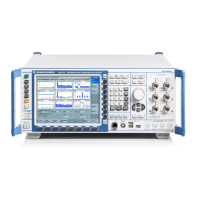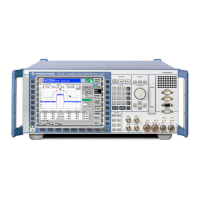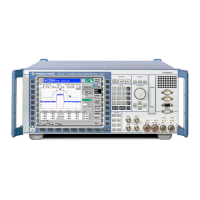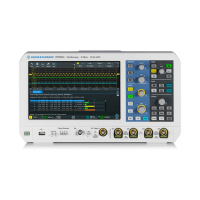System Overview
R&S
®
CMW500
60User Manual 1173.9463.02 ─ 06
●
For symmetric quantities with alternating sign such as the phase, frequency or timing
error, the peak value is either the maximum or minimum, whichever has the larger
magnitude.
3.2.4.4 Averaging
In single-shot measurements, "Average" values (traces and single values) are calculated
as the arithmetic mean value over all measurement intervals since the start of the mea-
surement. Assume that n measurement intervals have been measured. The average
result at each measurement point is obtained recursively from the preceding (n - 1)
st
average result and the n
th
current result.
Equation 1:
To obtain average traces, the R&S CMW500 calculates the average of consecutive mea-
surement intervals at each trace point.
The formula above is modified for the magnitude error and the phase error, where positive
and negative contributions tend to compensate each other. The "Average" of these quan-
tities is obtained as the average of the absolute values.
Equation 2:
Logarithmic quantities are first averaged and then converted to a dB-value.
Note that the frequency error and timing error, although symmetric, is averaged according
to Equation 1.
For continuous measurements after the first statistic cycle, Equation 1 and Equation 2
above are modified in order to ensure that the statistical weight of the last trace measured
does not fall below the "statistic length". For a statistic length c (c measurement intervals
per cycle) and n > c, Equation 1 is replaced by:
As a consequence, the statistic length has an impact on average results obtained in
continuous measurements.
3.2.4.5 Standard Deviation
The "Standard Deviation" σ
n
indicates the spread of the n values at each measurement
point. It is defined as the square root of the variance, which is the mean square of the
deviation of the values from their own arithmetic mean.
Measurements
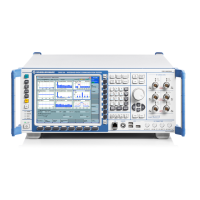
